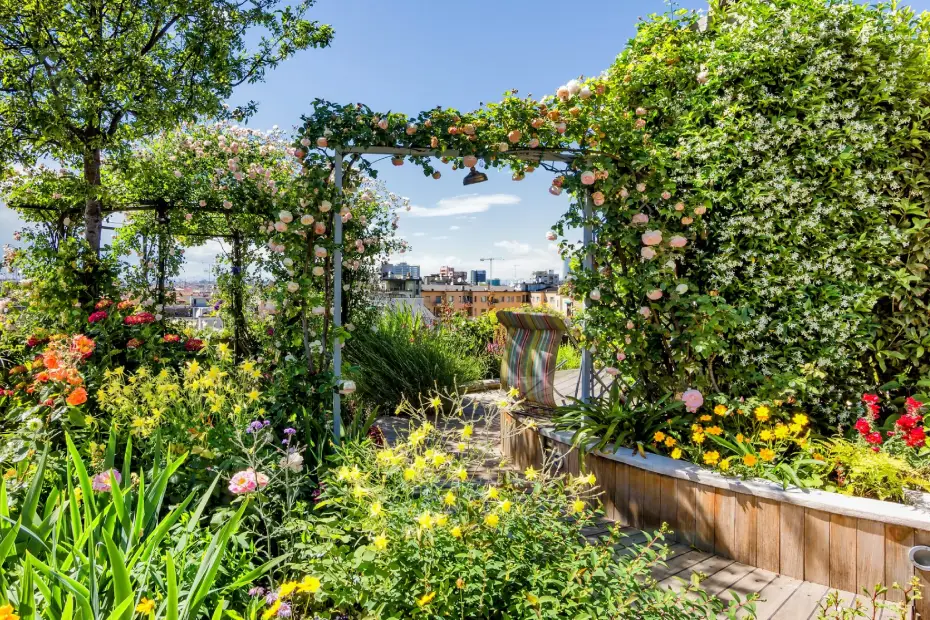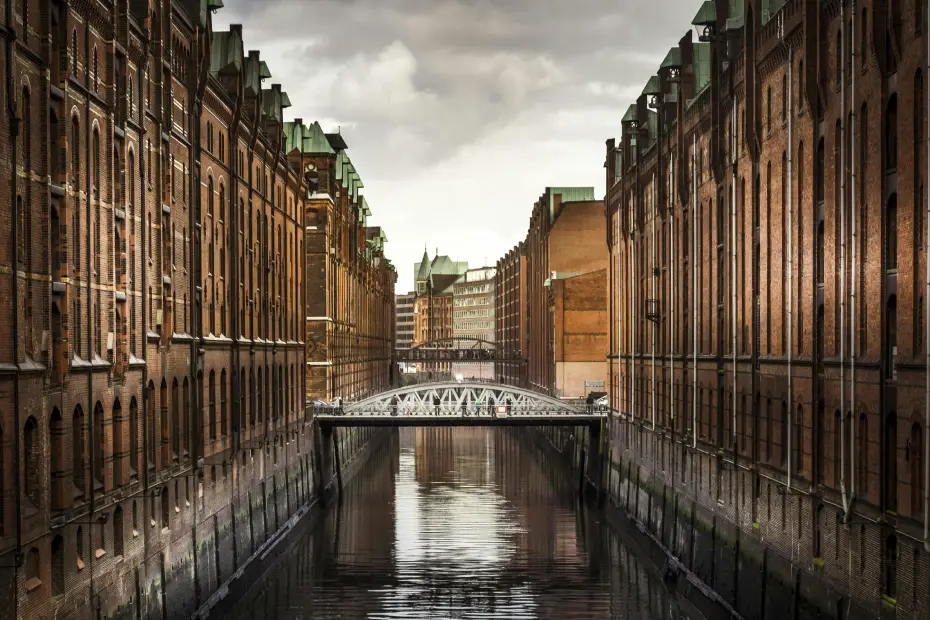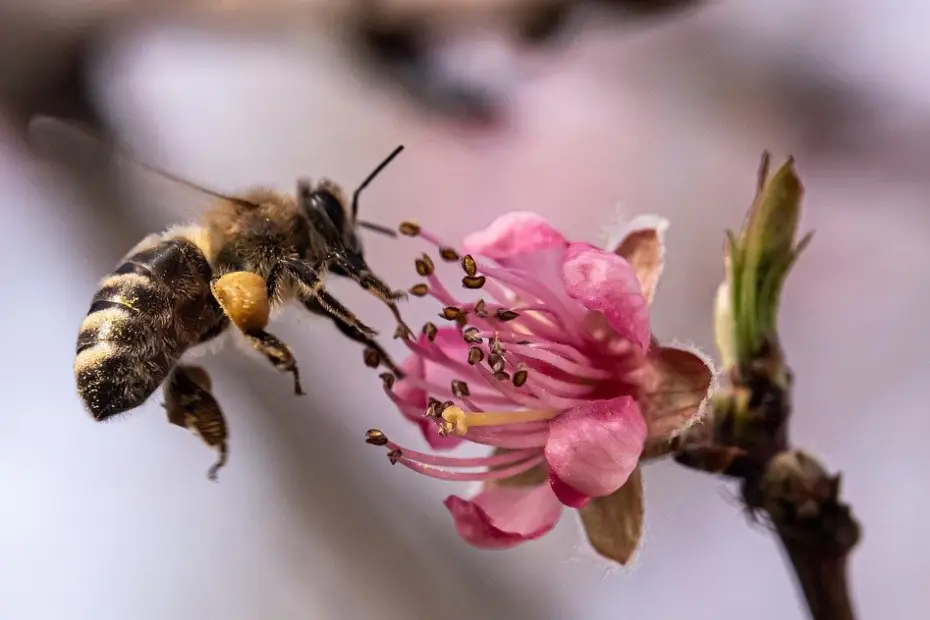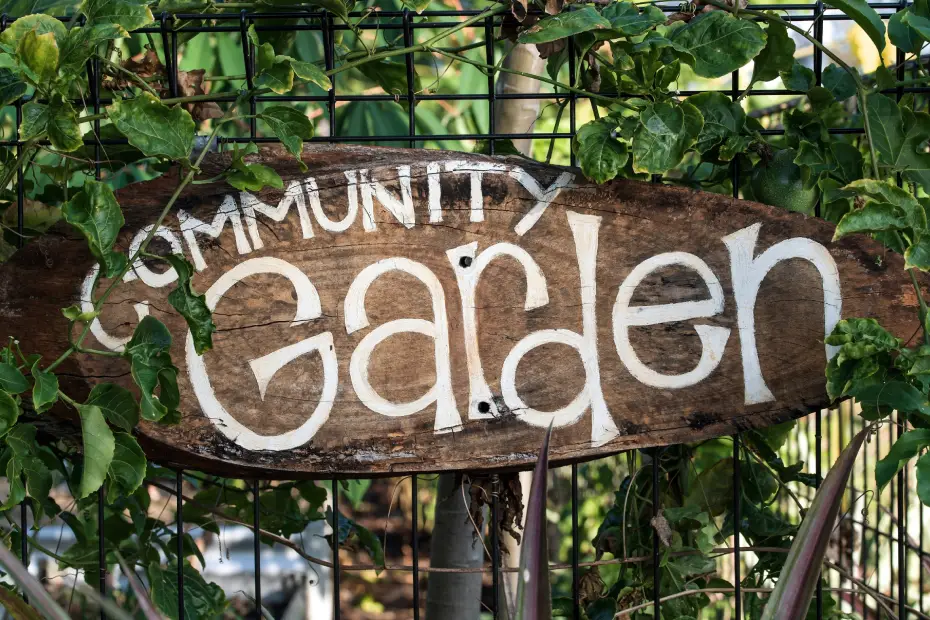Table of Contents
Green roofs stand out as sustainable solutions that solve social and environmental issues in the face of rapidly increasing climate change and shrinking urban green spaces. Once considered a novelty, these creative rooftop gardens are now appreciated for their enormous potential to mitigate climate change, protect biodiversity, and enhance urban quality of life.
Introduction to Green Roofs and Rooftop Gardens
What precisely are green roofs, then? In essence, they are green roofs that are added to buildings to turn otherwise lifeless rooftops into thriving ecosystems. These “living roofs” can be anything from elaborate dense green roofs that imitate ground-level gardens with trees and shrubs to basic vast green roofs with low-growing plants. The adaptability of green roofs to different building types and climates is what makes them so beautiful.
Green roofs have several advantages that go well beyond looks. They serve as carbon sinks to lessen the effects of climate change and as natural air conditioners, lowering the urban heat island effect. In addition, they support biodiversity, give important habitats for species, and have several other social and economic benefits. Let’s take a closer look at the many effects of green roofs.
The Environmental Impact of Green Roofs
Green Roofs and Climate Change
Urban Heat Island Effect: The urban heat island effect, in which metropolitan regions have noticeably higher temperatures than the nearby rural areas, is one of the most urgent environmental issues that cities are currently confronting. The prevalence of concrete, asphalt, and other heat-absorbing materials in cities is the main source of this phenomena. Because of their capacity to reflect sunlight and evapotranspirate, green roofs can dramatically lower surface temperatures, thereby reducing the impact of the urban heat island effect and fostering a more comfortable urban environment.
Carbon Sequestration: The process of absorbing and storing carbon dioxide from the atmosphere is known as carbon sequestration, and green roofs are essential to it. During photosynthesis, plants take in carbon dioxide, and some of this carbon is stored in the plants and soil. Even though each green roof may only be able to sequester a little amount of carbon, together they can have a significant influence on a city and help combat climate change.
Stormwater Management: Heavy rains in cities can overburden stormwater infrastructure, causing flooding and water contamination. By acting as organic rainwater sponges, green roofs lessen the load on drainage systems by collecting and holding onto rainwater. Evapotranspiration subsequently releases the held water gradually, assisting in the control of the urban water cycle.
Air Quality Improvement: Better air quality is another benefit of having a green roof. Through photosynthesis, plants release oxygen into the atmosphere while simultaneously absorbing contaminants like nitrogen dioxide and particulate matter. Research has demonstrated that green roofs can considerably lower local air pollution levels, leading to healthier urban settings.
Green Roofs as Wildlife Havens
Habitat for Pollinators and Beneficial Insects: There are significant ramifications for food production and ecological health for the global concern of pollinator declines, such as those of bees and butterflies. For these important animals, green roofs can offer significant habitat in the form of food supplies and nesting places in otherwise desolate urban areas. Additionally, they can harbor a wide range of helpful insects that support ecological balance and pest control, like lacewings and ladybugs.
Support for Bird Populations: Green roofs have advantages for birds as well. huge green roofs might not be ideal for huge bird species, but smaller species might find valuable rest stops and nesting sites on them on their migration. Green roofs with a variety of plant life draw insects, which in turn provide birds with food.
Wildlife Corridors: Green roofs can serve as vital wildlife corridors in heavily populated urban areas, bridging dispersed green spaces and enabling animals to migrate around the cityscape. Maintaining genetic diversity and guaranteeing the long-term survival of urban animal populations depend on this link.
Native Plants for Biodiversity: The ecological benefit of a green roof is greatly influenced by the plants that are used for it. Native plants are best suited to the local environment and offer native wildlife the best food and shelter. Including a range of native plants in the design of a green roof can greatly increase biodiversity and establish a healthy ecosystem on rooftops.
The Economic and Social Benefits of Green Roofs
Economic Advantages
Energy Cost Reduction: Buildings use less heating and cooling because green roofs naturally insulate. By acting as a thermal barrier, the vegetation layer lowers energy usage and moderates temperature variations. Research has indicated that the installation of green roofs can result in notable energy savings, especially in regions with high temperatures.
Increased Property Values: Properties may be worth more because of the visual allure and environmental advantages of green roofs. Green roofs are a common indicator of building desirability, drawing higher rents or sale prices. Green roofs can also help buildings become certified as green buildings, which raises property values and draws in eco-aware tenants.
Green Job Creation: Green industry employment prospects are created by the particular knowledge and skills needed for the design, installation, and upkeep of green roofs. It is anticipated that the rising demand for green roofs would spur employment expansion in this industry and support long-term, sustainable economic growth.
Social and Health Benefits
Improved Mental and Physical Well-being: It has been demonstrated that having access to nature improves both physical and mental health. Green roofs give people in urban settings the chance to be outside and connect with nature, which lowers stress, elevates mood, and enhances general wellbeing. Green roofs have also been linked to healthier lifestyles and increased physical activity, according to studies.
Community Spaces: Green roofs can be converted into energetic public areas that promote social contact, leisure, and entertainment. In urban settings, rooftop gardens can hold festivals, workshops, and other activities that promote a sense of belonging.
Urban Food Production: In addition, green roofs can help supply fresh, locally grown food for metropolitan areas. Vegetables, herbs, and fruits can be grown in rooftop gardens, enhancing urban food systems and ensuring food security.
Designing and Implementing Green Roofs
Types of Green Roofs
Intensive vs. Extensive Green Roofs: Generally speaking, there are two primary categories of green roofs: intensive and extensive. Trees and bushes can be grown on intensive green roofs since they are deeper and more diverse in their plant support. Though they offer more aesthetic and ecological benefits, they also require more structural support and upkeep. On the other hand, extensive green roofs are shallower and usually comprise low-growing vegetation like grasses and sedums. They fit a larger variety of buildings because they are lighter and require less upkeep.
Modular vs. Built-in-Place Green Roofs: The difference between built-in and modular green roofs is another. Pre-vegetated trays or modules are placed on the roof to form modular green roofs. Although they are simple to install and flexible, they might not be as suitable for intricate roof shapes. Because built-in green roofs are situated immediately atop the roof, there is more room for personalization and interaction with the overall architecture.
Key Considerations for Green Roof Design
Plant Selection: Selecting appropriate plants is essential to a successful green roof. Climate, solar exposure, wind direction, and the intended ecological and aesthetic results are all important factors to take into account. Since native plants feed native species and are well-adapted to the local environment, they are often preferred.
Drainage and Irrigation Systems: For green roofs, proper water management is necessary. A thoughtfully planned drainage system makes sure that extra water is effectively drained from the roof, avoiding waterlogging and structural damage. In dry locations or for extensive green roofs that demand a lot of water, irrigation systems could be required.
Structural Considerations: It’s critical to evaluate the current roof structure’s load-bearing capabilities prior to installing a green roof. Particularly with dense green roofs, the weight of the soil, plants, and water on the green roof can be substantial. It could be essential to use structural reinforcement to guarantee the building’s stability and safety.
Maintenance and Sustainability
Ongoing Maintenance Requirements: For green roofs to be healthy and long-lasting, regular upkeep is necessary. This include keeping an eye out for pests and illnesses in addition to doing routine irrigation, fertilization, trimming, and weeding. The type of green roof and the variety of plants chosen determine how much upkeep is needed.
Sustainable Practices: A guiding concept in the planning and maintenance of green roofs need to be sustainability. This entails employing locally or repurposed materials, conserving water with effective irrigation systems, and fostering biodiversity with native plants. Sustainable green roofs improve our cities’ long-term resilience and health in addition to the environment.
Case Studies: Successful Green Roof Projects
The Bosco Verticale, Milan, Italy
Two residential towers in Milan, Italy known as the Bosco Verticale, or Vertical Forest, are covered in more than 20,000 trees, bushes, and other plants. This creative concept offers several environmental advantages in addition to a breathtaking visual display. In addition to lowering air pollution and providing home for wildlife, the plants on the towers assist to lessen the impact of the urban heat island. One example of how green roofs may change urban landscapes and create sustainable living spaces is the Bosco Verticale.
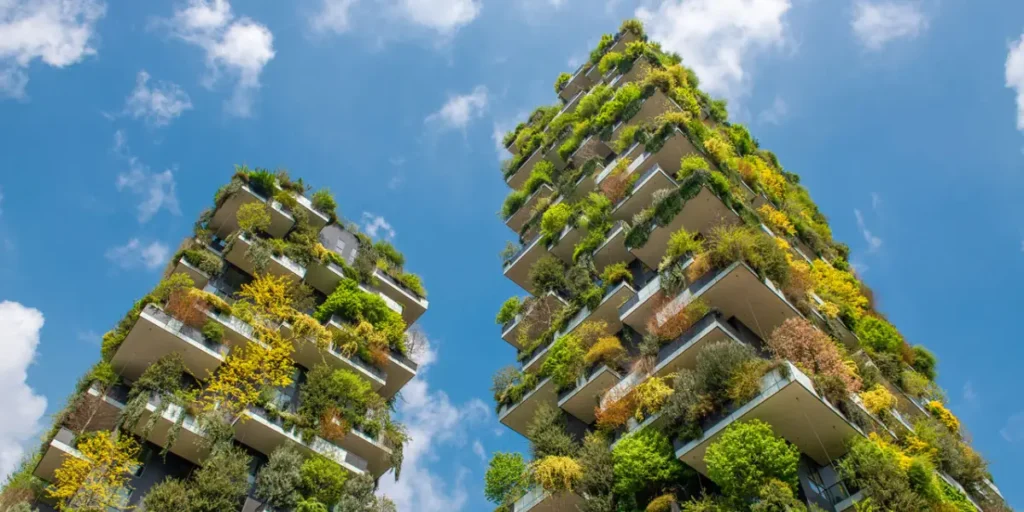
The California Academy of Sciences, San Francisco, USA
Located in San Francisco, the California Academy of Sciences is home to one of the largest living roofs in the world, spanning 2.5 acres. Many birds, butterflies, and other insects find a home on this sloping green roof, which is covered in native grasses and wildflowers. Additionally, the roof serves as a natural insulator, lowering the building’s energy usage and assisting in obtaining LEED Platinum certification.
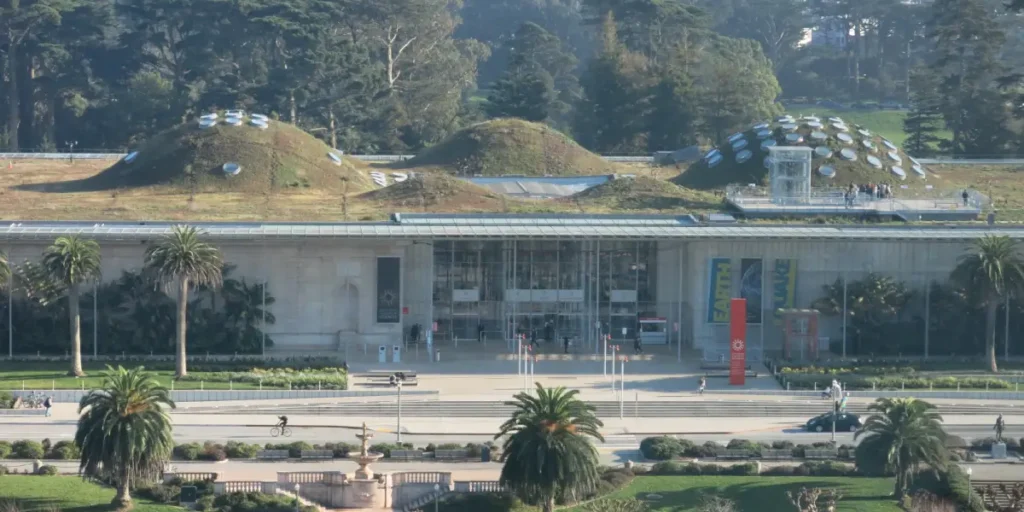
The ACROS Fukuoka Prefectural International Hall, Fukuoka, Japan
One impressive example of how green roofs may be incorporated into a building’s construction is the ACROS Fukuoka Prefectural International Hall. A sequence of terraced gardens surround the building’s south-facing exterior, forming a green cascade that reaches from the ground to the rooftop. Along with improving the building’s looks, this creative design offers other environmental advantages, such as better air quality and lower energy use.
These case studies highlight the various uses and advantages of green roofs in various situations. They show how green roofs may improve biodiversity, alleviate environmental issues, and build more habitable and sustainable cities.
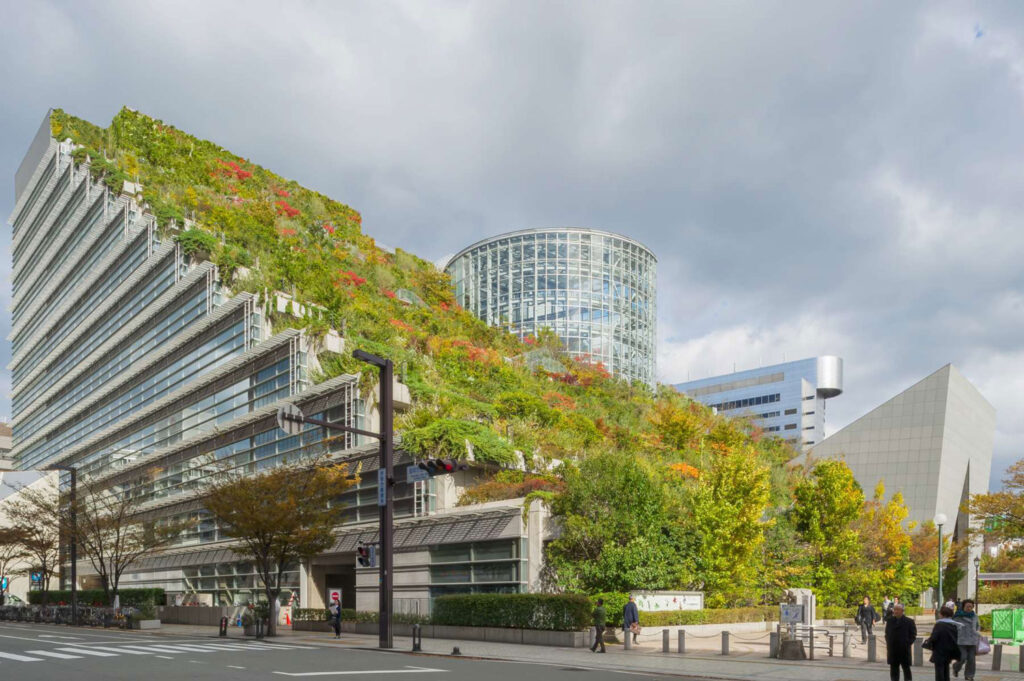
Overcoming Challenges and Promoting Green Roof Adoption
Common Obstacles to Green Roof Implementation
Cost and Maintenance Concerns: The perception of expensive installation and maintenance costs is one of the biggest obstacles to the widespread adoption of green roofs. Green roofs can be more expensive initially than standard roofs, but over time, they can save more money and add value to properties, among other advantages. Furthermore, the availability of modular systems and technological advancements in green roofs have reduced installation costs and increased accessibility.
Regulatory and Permitting Hurdles: Implementing green roofs may be hampered in some places by legal and permit constraints. Green roofs may require updates to building rules and zoning restrictions, and obtaining the required permits can be a laborious procedure. To promote the installation of green roofs, several communities are, nevertheless, realizing their benefits and expediting the approval procedures.
Misconceptions about Green Roofs: Misconceptions regarding the upkeep and effectiveness of green roofs are another barrier to their widespread adoption. Leaks, structural damage, or needless upkeep are concerns for some people. Outreach and education initiatives are essential to debunking these fallacies and promoting the safety and benefits of green roofs.
Policy and Incentive Programs
Existing Policies and Incentives: Around the world, numerous governments and localities have put laws and incentive schemes into place to encourage the installation of green roofs. These may consist of grants, tax benefits, and accelerated permissions. Green roofs might even be required in some circumstances for brand-new buildings or significant modifications. Incentives and programs like these can be very helpful in removing financial obstacles and promoting the widespread use of green roofs.
Advocacy for Stronger Policies: Stronger and more comprehensive rules and incentives are still required to encourage the installation of green roofs, even though they represent a welcome first step. The main goals of advocacy campaigns can be to inform decision-makers about the advantages of green roofs, push for more money for R&D, and encourage the incorporation of green roofs into plans for sustainable urban development.
The Future of Green Roofs
Emerging Trends and Innovations: The field of green roof technology is constantly evolving, with new innovations and trends emerging. These include:
- Biodiversity-focused designs: Increasing emphasis on creating green roofs that support a wide range of native plants and animals, contributing to urban biodiversity.
- Smart green roofs: Integration of sensors and automation technologies to optimize irrigation, monitor plant health, and improve overall performance.
- Green roof retrofits: Development of cost-effective and lightweight solutions for retrofitting existing buildings with green roofs.
- Vertical greening: Expanding the concept of green roofs to include vertical green walls and facades, further increasing the green footprint of urban areas.
The Role of Green Roofs in Sustainable Urban Development: Green roofs provide an essential tool for developing more resilient and sustainable urban settings as cities struggle with the issues of climate change, population expansion, and resource shortages. They make cities more livable and enjoyable, improve biodiversity, mitigate the effects of climate change, and improve the quality of the air and water. We can make our cities greener, healthier, and more sustainable places to live by incorporating green roofs into urban planning and design.
Continued Research and Advocacy: Even though the advantages of green roofs are widely established, more research is necessary to fully grasp their potential and enhance their management and design. In order to ensure that green roofs are widely adopted and that sustainable urban development policies incorporate them, advocacy initiatives are also essential.
Conclusion
A potent and creative response to some of the most important environmental and social issues that our cities are currently confronting is provided by green roofs. They fight climate change, protect wildlife habitats, clean up the air and water, use less energy, and improve city people’ quality of life in general.
Green roofs give promise as we work to create more resilient and sustainable cities. They serve as a reminder that nature can flourish even in highly populated urban areas and that we can all benefit from a greener, healthier, and more peaceful future if we embrace creative solutions.
